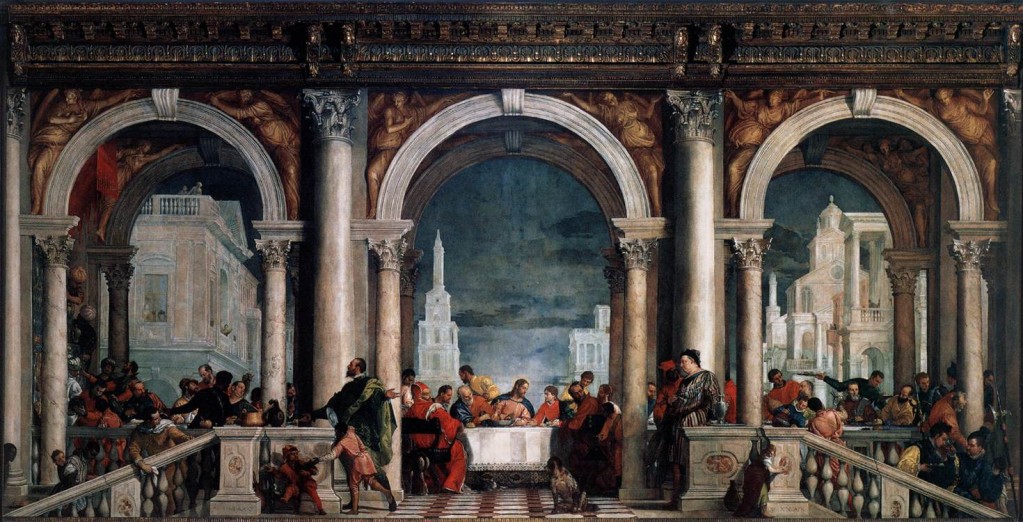The Trial of Veronese
by Mark Anthony Signorelli (October 2010)

In 1573, the painter Paolo Caliari (a native of Verona, and so more familiarly known as Paolo Veronese) was summoned before the Venetian office of the Inquisition. He had recently completed a depiction of the Last Supper in one of the city’s basilicas, and the Inquisitors wanted to know why he had filled his picture with such seemingly irreverent figures as dwarves, dogs, and a servant with a bloody nose. Particularly suspicious were a number of figures who appeared German or Swiss, and thus were presumed to represent Protestants. Veronese addressed his interlocutors with great confidence, asserting that it was his privilege and duty as an artist to paint according to the precedence of artistic tradition – he invoked the particular authority of Michelangelo, who painted nudes on the walls of the Sistine Chapel – and the lights of his own talent. Eventually, he appeased the Inquisitors by simply changing the title of his work.
Let us grant that the Inquisition was a monstrous institution. Let us grant further that its adjudication of Veronese’s trial reflected the last degree of presumptuous Philistinism. Let us affirm that it is impossible to imagine any such body, sitting with any such purposes, in our own times, or, if existent, as anything other than an onerous vehicle of oppression. Yet when all of this is granted, we cannot help but recognize one additional fact about this incident, no less self-evident than the others: such a trial could not take place except among a civilization which accorded the first importance to the arts. More significantly, the reason we no longer have such trials is not because we adore freedom more than those ancient Italians (which we do not), nor because we hate tyranny more than they did (which we do not), nor because we are more enlightened and just than they were (which we most certainly are not); the reason we no longer have such trials is simply because we do not accord to the arts any real importance at all.
To comment on this essay, please click here.
To help New English Review continue to publish thought provoking essays such as this one, please click If you enjoyed this essay and want to read more by Mark Signorelli, please click here.